In culinary and baking circles, margarine has been a go-to ingredient for ages. It’s adaptable, user-friendly, and imparts a lush, creamy consistency to beloved recipes.
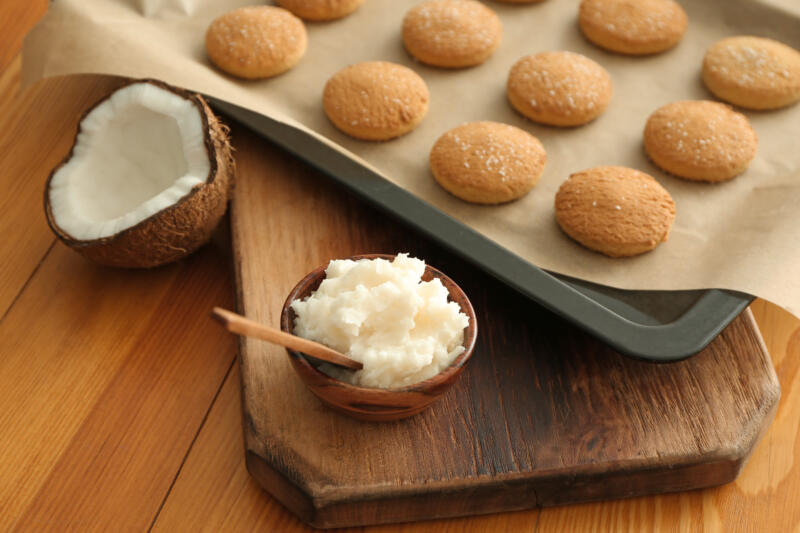
But what about when you’re on the hunt for a healthier option? This is where alternatives to margarine come into play.
These alternatives offer a myriad of benefits, from lower cholesterol levels to reduced saturated fats.
In this article, we’ll explore the top margarine substitutes, their benefits, and how to choose the right one for your culinary needs.
How to Choose the Right Margarine Substitute
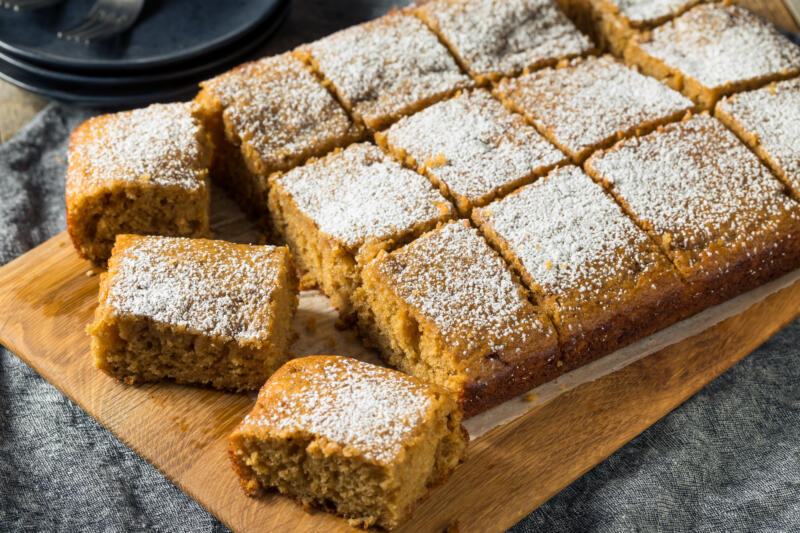
Choosing the right margarine substitute isn’t a one-size-fits-all decision.
It depends on your dietary needs, the flavor you’re aiming for, and the specific requirements of the recipe you’re following. Here are some factors to consider:
- Dietary restrictions: If you’re vegan, lactose intolerant, or have other dietary restrictions, make sure your substitute fits within these guidelines.
- Flavor profile: Some substitutes, like coconut oil or avocado, can add a distinct flavor to your dishes. Make sure this aligns with the taste you’re aiming for.
- Cooking or baking requirements: Not all substitutes behave the same way under heat. For instance, some oils may not be suitable for high-heat cooking.
Common Types of Margarine Substitutes
Margarine substitutes come in a variety of forms, each with its unique characteristics, benefits, and potential drawbacks. Some of the most popular margarine substitutes:
1. Butter

Butter is a classic margarine substitute, particularly in baking, as it is created by separating the cream from milk and churning it to extract the fat.
This fat source provides baked goods with an unbeatable rich flavor and tender texture.
Despite its advantages, it’s important to note that butter has a high saturated fat content, which may raise concerns for individuals who monitor their cholesterol levels.
Moreover, it is unsuitable for individuals with dairy allergies or lactose intolerance.
2. Olive Oil

Olive oil is a superb alternative to margarine, especially when it comes to baking.
It adds additional moisture and imparts a flavorful touch that can enhance your recipes.
Olive oil is characterized by its low saturated fat content, abundant monounsaturated oleic acid, and antioxidants, which make it a healthier option.
Nevertheless, its distinct flavor may not complement all recipes, so it’s advisable to use it judiciously.
3. Mashed Banana
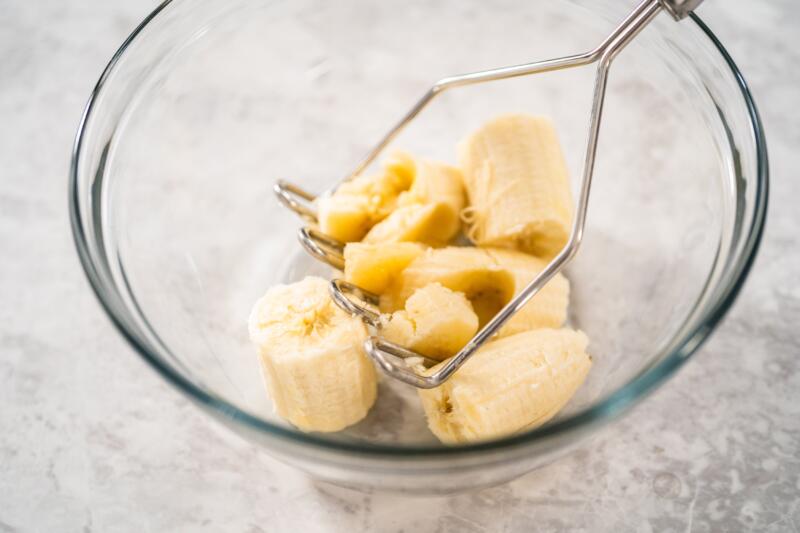
Mashed banana is a unique and nutritious margarine substitute. It adds moisture and flavor to recipes, reducing the need for processed sugar.
Plus, it’s packed with essential nutrients and can even replace eggs in some recipes, making it a great choice for vegans. A general guideline is to substitute one banana for every stick of margarine.
However, keep in mind that bananas will impart their flavor to your baked goods.
4. Coconut Oil

Coconut oil serves as a flexible alternative to margarine, suitable for both baking and cooking.
It imparts a subtle coconut flavor to the finished product, which can be a delightful addition to certain recipes.
The typical ratio of coconut oil to margarine or butter is 2:1.
However, coconut oil has a high saturated fat content, which can impact cholesterol levels, so it’s best to use it in moderation.
5. Unsweetened Applesauce
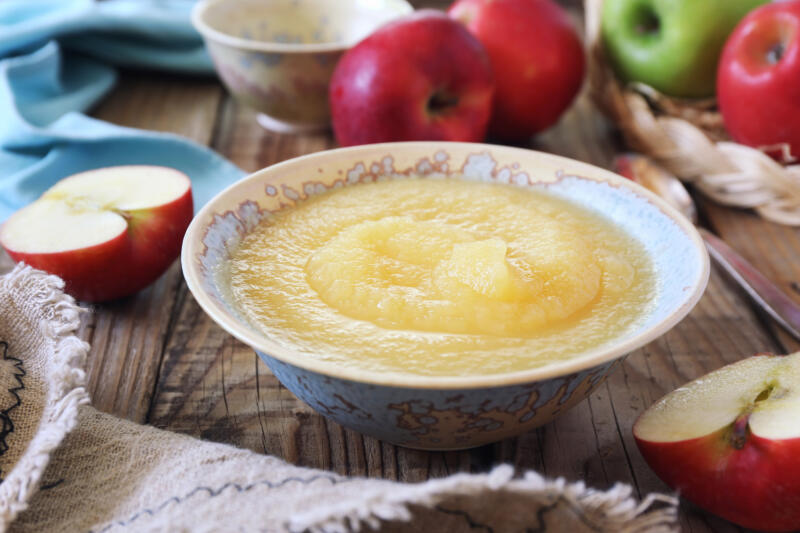
Unsweetened applesauce is a fantastic substitute for margarine in baking recipes.
It’s low in calories and fat-free, making it a healthier option for those watching their diet.
The recommended ratio is a 1:1 substitution for margarine. Unsweetened applesauce works wonderfully in cakes, muffins, brownies, and bread, adding a subtle sweetness and moist texture.
However, it’s important to note that it may alter the texture of your baked goods, making them denser.
6. Vegetable Oil
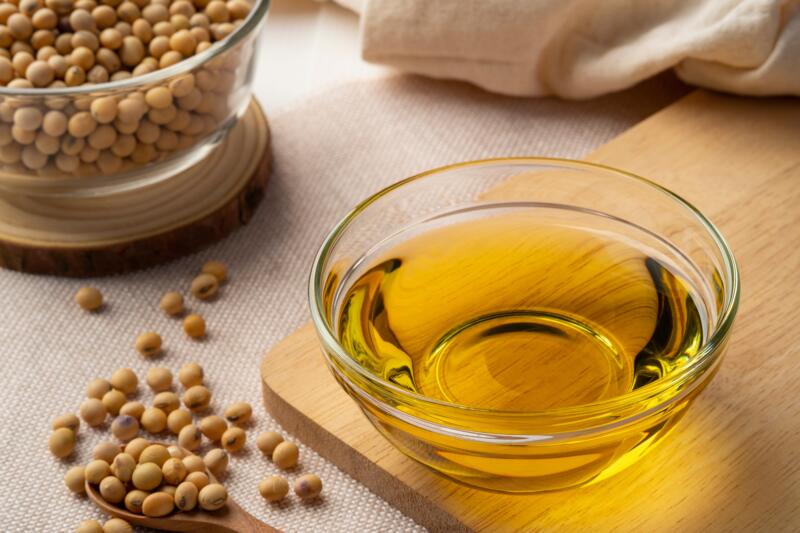
It is another versatile margarine substitute, particularly useful in recipes that call for melted shortening.
However, it’s not suitable for recipes that require solid fat, like pie dough, biscuits, or scones!
There are various types of vegetable oil you can use, including canola oil, peanut oil, and sunflower oil.
The ratio of solid fat to liquid fat may vary depending on the type of vegetable oil used, so it’s best to follow the recipe’s instructions closely.
7. Greek Yogurt
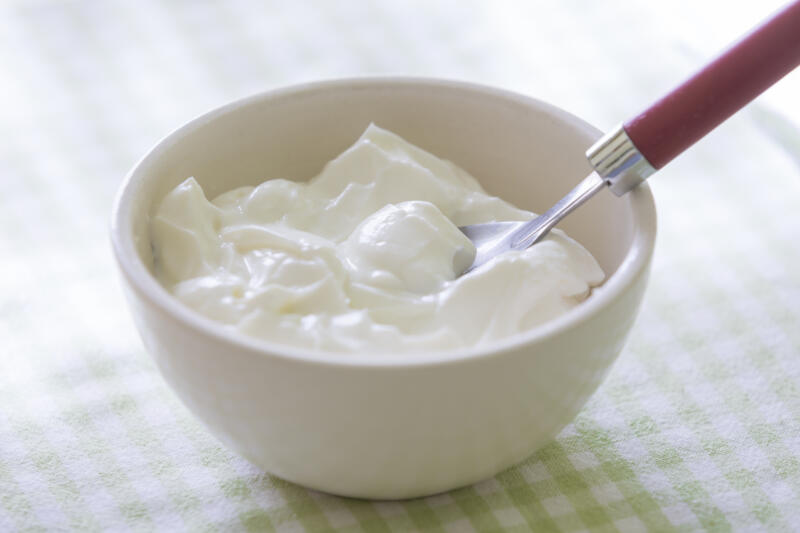
Greek yogurt stands as a more nutritious substitute for margarine, apt for both baking and cooking. It infuses baked items with moisture and a zesty touch, elevating their flavor and consistency.
When a recipe requires less than 1 cup of margarine, Greek yogurt can be directly swapped in equal measure.
However, for recipes requiring more than 1 cup, you may need to increase the flour or reduce the liquid to prevent the end product from becoming too soggy.
8. Avocado

Avocado is a versatile and flavorful substitute for margarine. Mashed avocado serves as a great spread for bread and crackers and can be integrated into baked dishes.
Rich in fiber, vitamins, and beneficial fats, it’s a healthful enhancement to your meals.
However, similar to bananas, avocados will impart their flavor to your dishes, so use them in recipes where their unique taste can shine.
9. Ghee

Ghee, or clarified butter, is another excellent margarine substitute. It’s made by removing the milk solids and water from butter, resulting in a pure fat that’s more stable than regular butter.
Ghee has a higher smoke point, making it suitable for high-heat cooking.
Plus, it contains less lactose and casein compared to standard dairy products, making it a better choice for those with dairy sensitivities.
10. Sunflower Seed Butter
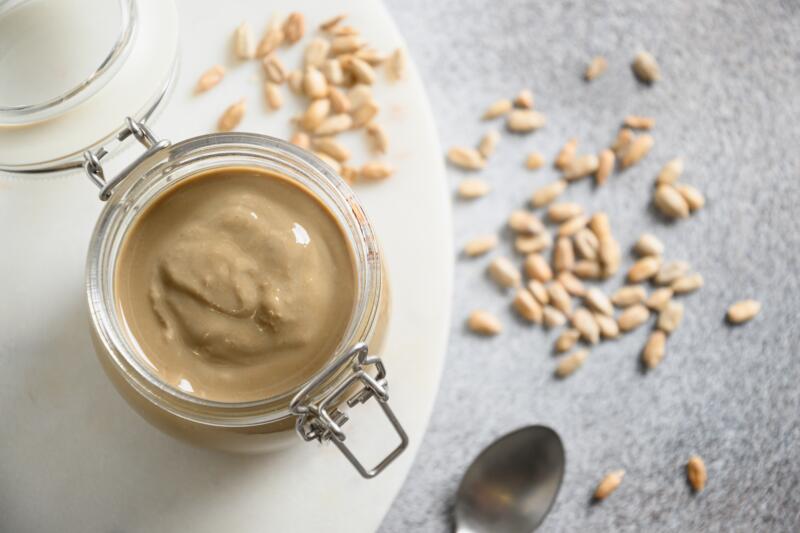
Sunflower seed butter is a creamy and versatile margarine substitute. It’s perfect for spreading, baking, and cooking, and its nut-free nature makes it safe for those with nut allergies.
Its deep, nutty taste can introduce a distinctive flair to your dishes. However, like other nut and seed butters, sunflower seed butter has a lower fat content than margarine, so you may need to adjust your recipes accordingly.
11. Tahini
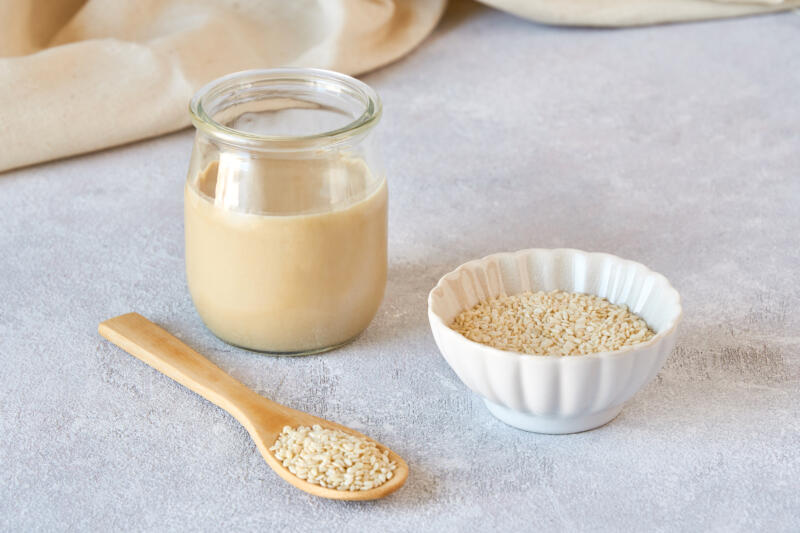
Tahini, derived from sesame seeds, stands as a distinct and tasty alternative to margarine.
Its rich, nutty flavor makes it a versatile spread alternative, perfect for those looking to try something different.
While tahini is made from sesame seeds and not nuts, its flavor can be an acquired taste. It can be used in a variety of recipes, from savory dishes to sweet treats.
If you’re new to tahini, start with small amounts to get accustomed to its unique flavor.
12. Cocoa Butter
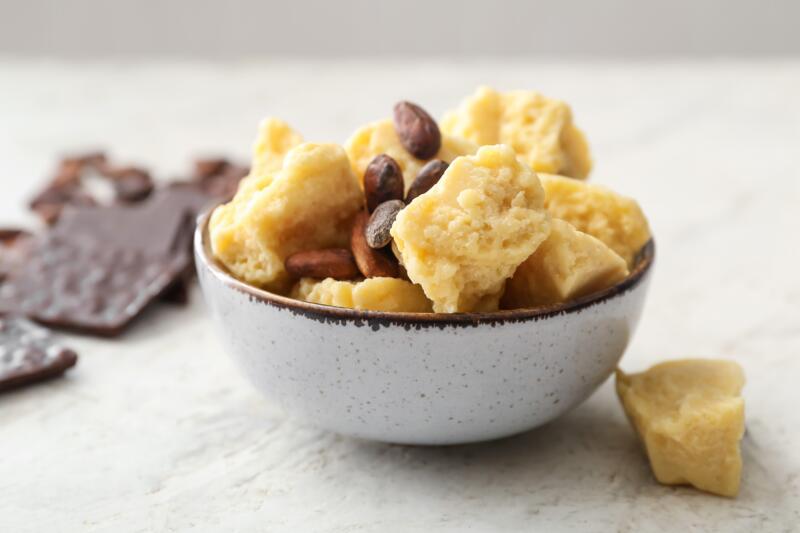
Cocoa butter is a fantastic margarine substitute for baking. It’s solid at room temperature and has a soft, slightly sweet texture.
Plus, it can enhance the chocolate flavor in your recipes, making it ideal for sweet treats.
However, cocoa butter does not spread well and is not suitable as a frying fat.
So, it’s best used in baking where its unique properties can shine. Whether you’re making a rich chocolate cake or a batch of brownies, cocoa butter can add that extra touch of indulgence.
13. Cream Cheese
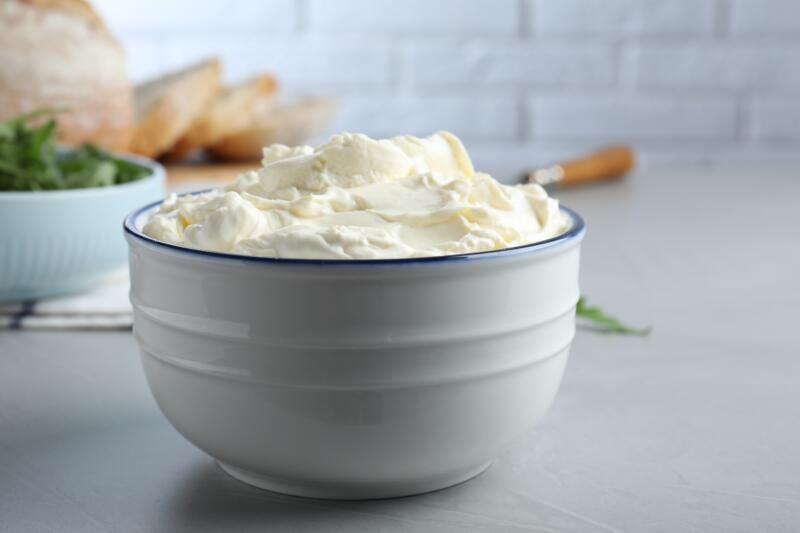
Cream cheese, a dairy product rich in fat, can effectively replace margarine. Its creamy texture can provide a fluffy and moist consistency to baked goods.
Cream cheese is versatile for both sweet and savory recipes and doubles up as an excellent spread.
However, it’s important to consider any dairy intolerances or allergies when using cream cheese as a substitute.
14. Peanut Butter

Peanut butter serves as a flexible alternative to margarine, infusing a deep, nutty taste into numerous dishes.
From cookies and brownies to cakes, pancakes, and pastries, peanut butter can enhance your dishes with its unique taste.
Peanut butter contains about 50% fat, so when substituting margarine with it, you should add an equal amount of oil to enhance the fat content.
This will ensure your baked goods have the right texture and moisture.
15. Soy Margarine
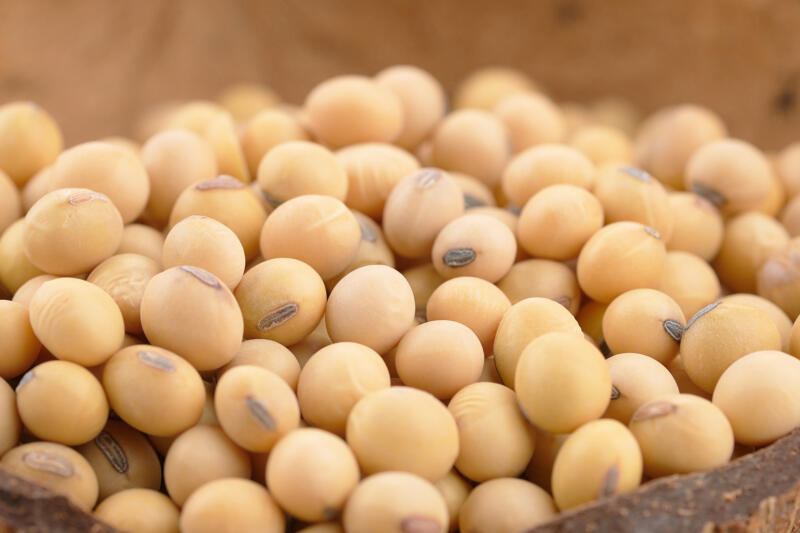
Soy margarine is a plant-based margarine substitute that’s low in saturated fat and cholesterol-free.
It can be used in baking and cooking, and it can be substituted in a 1:1 ratio with margarine.
This makes it a great choice for those looking to make healthier choices without compromising on taste or texture.
Whether you’re baking a cake or frying up a stir-fry, soy margarine can be a handy ingredient in your kitchen.
Closing Thoughts
We’ve covered a lot of ground in this article, exploring a wide range of margarine substitutes, each with its unique benefits and uses.
From the richness of butter and the health benefits of olive oil to the unique flavors of tahini and mashed banana, there’s a substitute for everyone.
Play around with diverse replacements to identify what aligns best with your culinary creations and flavor preferences.
Baking is a blend of innovation and experimentation, just as much as it is about sticking to recipes. So, venture out and embrace new possibilities.
If you have any questions or comments, or if you’ve discovered a great margarine substitute that we haven’t covered, please share your thoughts.